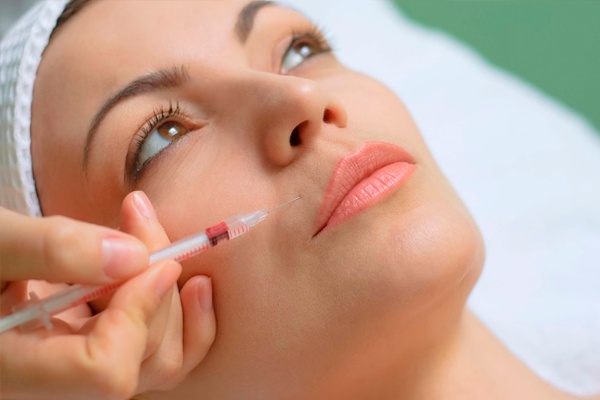Maintaining healthy skin and hair is a priority for many people, especially as natural aging, environmental exposure, and lifestyle factors begin to take a visible toll. While countless cosmetic products promise rejuvenation, few offer long-term, natural results backed by science. One treatment that has gained widespread attention in recent years is PRP therapy, a minimally invasive procedure that uses your body’s own healing properties to stimulate regeneration.
So, what is PRP treatment, and how can it help with hair and skin health? This article explores the science behind PRP, how the procedure works, and its growing use in dermatology and aesthetic medicine.
Understanding PRP: The Basics

PRP stands for Platelet-Rich Plasma—a concentrated solution derived from your own blood that contains a higher-than-normal level of platelets. Platelets are best known for their role in blood clotting, but they also carry powerful growth factors and proteins that aid in tissue repair and cell regeneration.
The idea behind PRP therapy is simple: By isolating and reintroducing these growth factors into specific areas of the body, such as the scalp or face, you can help stimulate collagen production, improve circulation, and trigger natural healing processes.
PRP was first used in orthopedics and sports medicine to accelerate healing from injuries, but its regenerative properties have since been embraced in cosmetic and dermatological applications.
How Is PRP Treatment Performed?
The PRP treatment process is relatively straightforward and typically completed in under an hour. Here’s what you can expect:
1. Blood Draw
A small amount of your blood is drawn, similar to a routine lab test.
2. Centrifugation
The blood sample is placed in a centrifuge, which spins it at high speed to separate the plasma from red and white blood cells. This results in a concentration of platelet-rich plasma.
3. Injection or Microneedling
The PRP is then injected directly into the treatment area (such as the scalp for hair loss or the face for skin rejuvenation) or applied topically during a microneedling session to enhance absorption.
Because the treatment uses your own biological material, the risk of allergic reactions or complications is extremely low.
PRP for Hair Loss
One of the most common uses of PRP therapy is in the treatment of androgenetic alopecia, also known as male or female pattern baldness. PRP can also help with other types of thinning hair or hair shedding conditions.
How It Works:
PRP is injected into areas of the scalp where hair is thinning. The growth factors in the plasma help to:
- Stimulate dormant hair follicles
- Improve blood flow to the scalp
- Encourage thicker, stronger hair growth
What to Expect:
Results aren’t immediate, as the natural hair growth cycle takes time. Most patients begin to see visible improvements within 3 to 6 months, with ongoing treatments recommended for best results.
PRP for Skin Rejuvenation
PRP is also widely used for facial rejuvenation, sometimes referred to as the “vampire facial.” When applied to the skin through microneedling or direct injection, PRP helps:
- Stimulate collagen and elastin production
- Reduce fine lines and wrinkles
- Improve skin texture and tone
- Minimize acne scars and hyperpigmentation
The natural growth factors in PRP trigger the skin’s repair mechanisms, leading to firmer, smoother, and more youthful-looking skin over time.
Additional Benefits of PRP Treatment
In addition to hair and skin health, PRP therapy has been explored for various medical and aesthetic purposes, including:
- Enhancing wound healing
- Improving joint function in arthritis
- Treating under-eye hollows and dark circles
- Supporting recovery after laser resurfacing or surgery
Its versatility and safety make PRP a valuable tool in modern regenerative medicine.
Are There Any Side Effects?
Because PRP is an autologous treatment (meaning it comes from your own body), side effects are generally mild and temporary. Some individuals may experience:
- Redness or swelling at the injection site
- Minor bruising or discomfort
- Temporary scalp sensitivity
These symptoms usually subside within a few hours to a couple of days. It’s important to follow post-treatment care instructions to optimize results and minimize any irritation.
Who Is a Good Candidate for PRP?
- PRP treatment may be ideal for individuals who:
- Have early-stage hair thinning or hair loss
- Want to reduce signs of skin aging naturally
- Prefer a minimally invasive approach with minimal downtime
- Are not suitable candidates for more aggressive cosmetic procedures
However, PRP is not recommended for individuals with certain blood disorders, active infections, or chronic illnesses that affect healing. A medical consultation is essential to determine if PRP is a safe and appropriate option based on your health profile.
Final Thoughts
So, what is PRP treatment and why is it becoming a go-to solution for hair and skin health? In essence, it’s a regenerative therapy that uses the body’s natural growth factors to repair, renew, and revitalize. From encouraging hair regrowth to improving skin texture and tone, PRP offers a non-surgical, low-risk option for those looking to restore a more youthful appearance.
As with any cosmetic or medical treatment, results vary depending on individual factors. Speaking with a qualified medical provider will help you set realistic expectations and develop a personalized plan that suits your needs.
What Is PRP Treatment? Learn how this natural, regenerative therapy supports hair regrowth and skin rejuvenation at Liquivida Wellness Center.